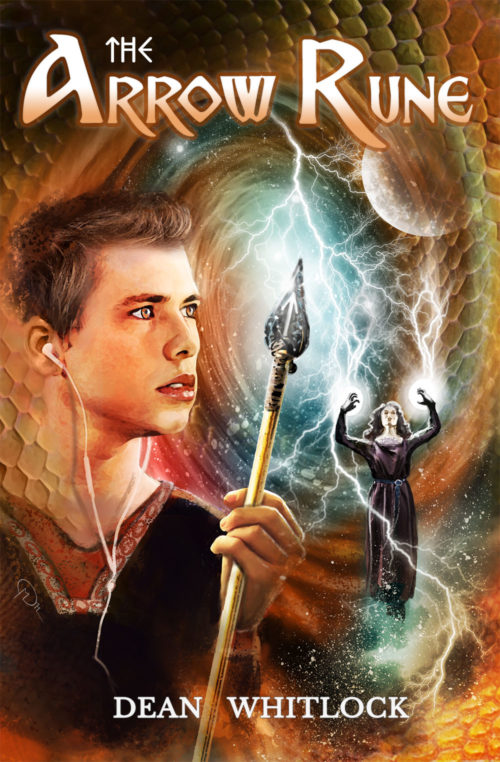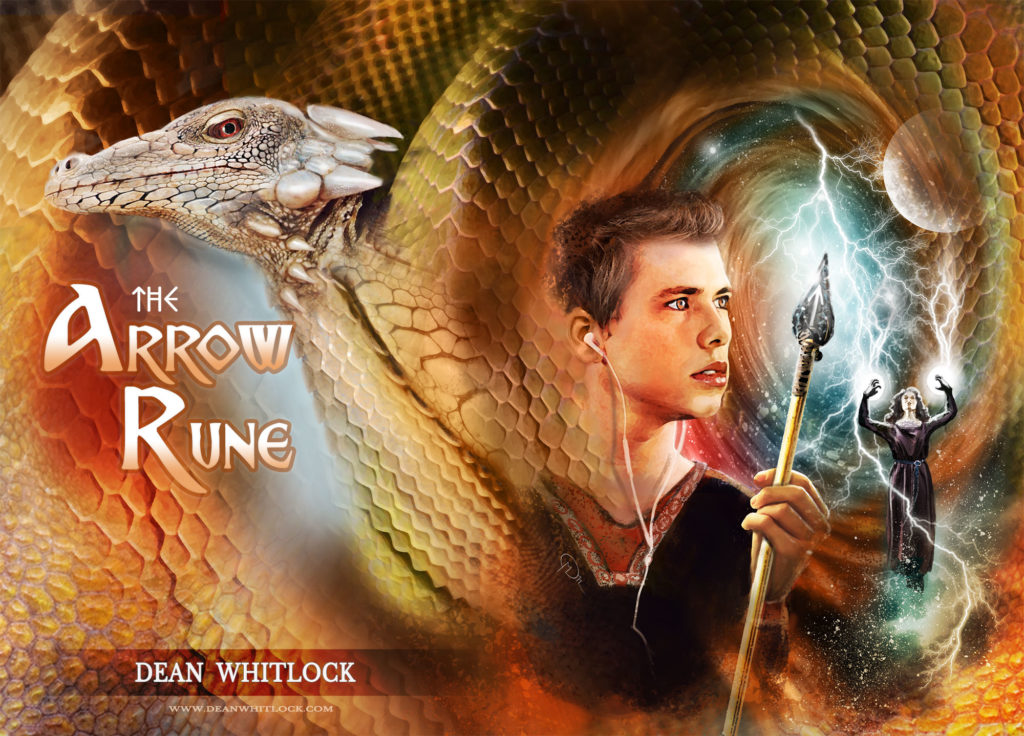The Arrow Rune
Now available in paperback and ebook!
“The Arrow Rune is a thrilling, world-traveling fantasy novel and Ed Lewis is a sympathetic and worthy hero. Readers will love learning about runology and imagining themselves in the dangerous and mysterious world of this must-read tale!”
– S. S. Taylor, author of The Expeditioners series
Order the paperback through your local bookstore or find it online at Amazon, Barnes & Noble, and other major outlets.
Get the ebook from –Amazon– –Apple– –Kobo– –Nook– !

Ed Lewis has been dragged to Medieval Faires for as long as he can remember. Now 17, he’s sick of the whole scene: helping his uncle make bows, minding the store, and – most of all – translating his mute mother’s sign language as she reads runes for a stream of gaga faire-goers. Only one thing makes him come this time, a last chance to impress a certain young woman by winning the archery tournament. It feels like a matter of life and death.
All that changes when Ed discovers an ancient, rune-marked arrowhead tucked in his bedroll. He has no idea who put it there and doesn’t ask. Angered by his uncle’s endless chores, embarrassed by losing the tournament, he buries himself in making an arrow for his find.
What he creates is beyond his ken, for the arrowhead is a gate-key to another world, his mother’s world, locked in battle between her people and its old masters, a war chief and a druid witch of the Britons. It’s the world where his father was lost, and mad harpers pluck illusions from their tunes. A world where there be monsters, for Beowulf’s saga is fresh and real. A world of magic and war, where skill, friendship, and a healthy dose of fear solve riddles that reveal the true nature of love, life, and death.
The Arrow Rune was inspired by a performance of Beowulf by Benjamin Bagby (watch a clip of it here). I had never read Beowulf in school, so I prepped for the performance by getting a copy of the Seamus Heaney translation and reading the first third, all about the slaying of the monster Grendel. Bagby performs that much of the piece (about fifty-minutes’ worth) in its original language of Anglo-Saxon, or Old English. Fortunately for the audience, he is a smart enough performer to provide “supertitles” displayed on a screen several feet above him. He also accompanies himself on a replica Anglo-Saxon harp, or lyre, and I was completely enthralled (“enslaved” from the Anglo-Saxon word for slave: thrall. Yes, I do get geeky about such things). So enthralled that I went back and read the rest of the saga. Surprise! Beowulf not only battles and kills both Grendel and Grendel’s mother when he’s young, at the end of his own life, he battles and kills a great wyrm, an Anglo-Saxon dragon.
That was it – I had to write a story set in this world. After well more than a year of research and brainstorming, I had the first draft down. It took another year-plus to pull out a “final” draft, and more months to polish that into the story that is The Arrow Rune. My main characters are from our time on our world. They confront the monsters of Beowulf’s time, and the people who imagined them into being, on an alternate Earth where time moves at a different pace and the Beowulf saga is still being composed by the scops, traveling poets and performers who, like the Celtic bards, are the living libraries of their culture’s literature. In this book, they are also a kind of magician, as are the rune-wives, who cast runes to heal wounds, protect warriors, and auger the future. What a world! I hope you enjoy your visit.
